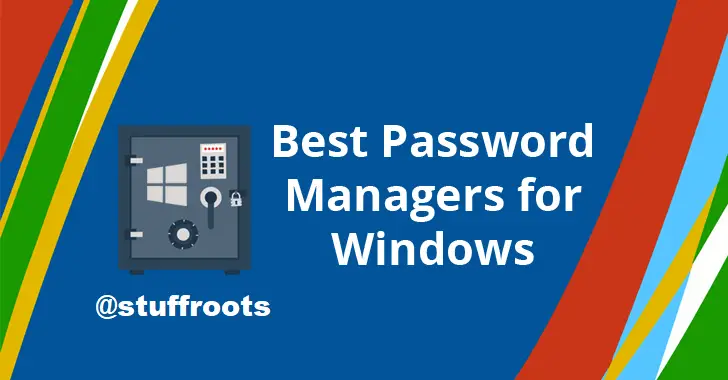According to BloggingX, tech is the most popular niche blogging startups choose. To be more precise, 60% of bloggers usually decide to dedicate their blogs to this niche. And it’s no surprise, as we live in a golden age of technology. Technology enthusiasts worldwide want to enjoy constant news about everything that is happening in the world of technology. Hence, there has never been a better time to start a tech blog, especially if you know that you’ve got a lot to offer.
Here’s an in-depth look at how to start a tech blog that will bring you profit.
1. Build a reader persona
Your blog’s reader persona is a hypothetical person that is interested in the content you’re creating. Start by identifying your target audience’s demographics and objective characteristics, including their values and preferences. Create polls to find out what your audience would like to know more about or create a forum page where your readers will express their opinion about your blog.
It’s also effective to analyze the kind of content they share on their social media accounts. If a post, let’s say, about technological advancement has been super popular, while a post about iPhone features didn’t get enough recognition, it’s better to stick to writing more about advancements. However, it doesn’t mean that you have to avoid topics that aren’t popular. To make your blog interesting, you should cover all the tech news and all the relevant topics.
2. Niche down to a specific tech area
Readers are always looking for fresh content they can’t find on other blogs. And many blogs, in turn, cover the most relevant news in all tech. If you want to stand out, it would be better to dedicate your blog to a specific tech niche. If you, let’s say, know a lot about Excel but have little knowledge of ATMs or smart homes, wouldn’t it be better to cover topics about Excel?
Blogging is a creative field that requires high-quality work from your end.
3. Find a good hosting service provider
This is the foundation of a good blog. A good hosting company should be reliable; it should ensure website security and have backups and SSL certificates that help encrypt data. A hosting service provider should also have good customer service, as you are bound to run into issues as you start building your site. WordPress is a great shared hosting option if you are green in web hosting. The platform is easy to use in building and managing a professional website at a budget-friendly cost.
4. Choose a relevant domain
The name should be short and simple, memorable, and brandable. A .com extension will make your blog seem more trustworthy. Additionally, avoid using hyphens in the name, as they are associated with spam domains. Double letters should be avoided, too, as you will lose traffic to typos.
Choose a domain that reflects your niche and gives users an idea of what the blog is about. Perform a Google search to confirm the availability of the name. Use Nameboy to generate unique domain names if you wish to brainstorm some ideas.
5. Network with other bloggers in your niche
You can endorse fellow bloggers’ content by sharing and commenting on their posts. Reach out to top bloggers, influencers, and creators in your niche.
You can also endorse top talent on your blog by listing top tech bloggers in your posts. The acknowledged bloggers will reciprocate, which could begin a productive partnership. You could also have reputable bloggers in your niche write guest posts for your blog. However, ensure to return the favor when the time comes. This is a great way to market your blog.
6. Leverage social media marketing
You can use social media platforms like LinkedIn, Twitter, Facebook, and TikTok to market your blog. Start by sharing unique content on these platforms by creating viral videos or pics. However, for best results, share these posts consistently. It would also help to join social communities relevant to your niche. There you can contribute to conversations and share links to your posts. Don’t be too aggressive about sharing your content, as it could come out as spam.
7. Use blog linking to the max
It helps to use anchor texts that include links to other articles within your blog and links to high-authority sites. External links are particularly helpful when you don’t have many articles relevant to your topic. In this case, you can link to other bloggers with a good reputation or articles referenced in your blog.
8. Avoid paid links
Paid links are viewed as a shortcut to increasing website traffic. If you opt to take this route, ensure that the blog that links you is highly authoritative in your niche and that links are mentioned in a natural context. This way, Google will view your links as genuine. This strategy is risky, especially if you want to monetize your blog. Instead, you can earn backlinks within your niche through high-quality viral content.
9. Monetize your content
Once the blog is set up, you can start making money from it. Advertise tech products or services by allowing ads on the website. You can also take up affiliate marketing, where you are paid a commission when your readers purchase products under promotion through your affiliate link. Partner with tech brands and get paid to create sponsored content that suits your audience. You can also create a membership site where subscribers will have to pay a fee to access exclusive resources and content.
10. Learn how to protect your blog from hackers
As a tech blog owner, you don’t want any issues to prevent you from posting the content. However, websites are always good targets for cybercriminals. Brute force attacks, SQL injections, remote code execution, and social engineering are just a few techniques that hackers use to get access to other websites. To protect your blog from malicious cybercriminals, here’s what you can do:
- Use a strong password, the one that is super hard to guess
- Install the latest security software
- Use HTTPS protocol
- Never click on suspicious links
- Back up your website to recover all data in case the website is hacked
- Install SSL and security plugins
- If someone starts calling or messaging you with suspicious requests concerning your website, try to find out who it is. PhoneHistory is a database with more than 500 million U.S. phone numbers that can help you do that.
Conclusion
Starting a successful tech blog is a great way to build a personal brand and earn from it. Being a reputable name in the tech niche can come with countless opportunities. You could be invited to speak at tech seminars, be asked to write for tech brands, or be paid as an affiliate marketer. That said, these tips should help you create a successful tech blog in a snap.






